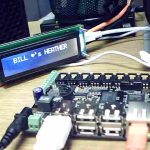In 1987, long before the words smart home ever hit a magazine cover, Jack Parker and I built a system that could open and close window blinds automatically based on sunlight.
There were no Arduinos, no Raspberry Pis, and no microcontrollers. Just relays, a photoresistor, and a DC motor. It wasn’t silent or sleek — it clicked and clacked its way through automation — but it worked. When the sun hit the sensor, the blinds opened. When clouds rolled in or evening fell, they closed.
It was our high school senior science projects, but it turned out to be much more than that. It was the seed of everything I’ve done since — automation, electronics, and that drive to make the world respond intelligently.
We couldn’t patent it. I didn’t even think about that back then. But years later, when I saw companies marketing motorized blinds and calling them “smart,” I couldn’t help but grin. I’d already built it — thirty years too early.
Looking back now, it’s wild to realize how many things I was experimenting with as a teenager have since become mainstream. That simple photoresistor and relay circuit became the DNA for what we now call IoT. The PVR system I later built evolved into what AppleTV and Roku now offer. Even my Raspberry Pi clusters mirror what’s called “edge computing” today.
It’s funny — when you’re inventing things before the technology exists to make them sleek, people call you eccentric. Decades later, they call it innovation.
The Mr. Bill Broadcast System, the Home Assistant network, the Pi clusters — they’re all echoes of that same instinct: see a problem, imagine the fix, and build it yourself. Project RetroShade wasn’t just my first project. It was the moment I realized that imagination and a few good relays could change the way I interacted with the world.
Thanks Jack for the framework!

